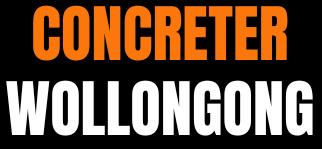
Concrete in Modern Architecture: Design Inspiration
Concrete: the cornerstone of modern architectural marvels.
From the Getty Center’s sleek silhouette to the imposing form of the Barbican Estate, concrete’s versatility has shaped iconic structures worldwide.
This material offers a unique blend of strength, durability, and design flexibility, making it a favorite among architects pushing the boundaries of modern design.
This exploration delves into concrete’s impact on modern architecture, examining its aesthetic versatility, sustainable advantages, and cost implications.
The Timeless Allure of Concrete
Concrete’s inherent strength and resilience make it ideal for ambitious architectural feats.
Its ability to withstand immense pressure and harsh weather ensures longevity, while its thermal mass contributes to energy efficiency by regulating temperature fluctuations.
Think of Fallingwater, where concrete cantilevers seemingly defy gravity, or the Barbican Estate, a concrete behemoth that maintains an air of spaciousness.
However, achieving this longevity and performance requires careful consideration of the concrete mix design, placement techniques, and long-term maintenance strategies.
Understanding these aspects is crucial for ensuring the structural integrity and aesthetic appeal of concrete structures over time.
More information on specific concrete mix designs for different applications, such as high-strength concrete for skyscrapers or fiber-reinforced concrete for pavements, would be beneficial.
A deeper dive into best practices for concrete placement, curing, and sealing would also be valuable for ensuring long-lasting performance.
Concrete Finishes: A World of Textures
From polished gleam resembling marble to the subtle sheen of brushed concrete, the material offers a spectrum of textures.
Exposed aggregate reveals the raw beauty of the stones within, while board-formed concrete captures the imprint of the wooden molds used in its creation.
Each finish offers a unique aesthetic and requires specific maintenance.
Polished concrete demands regular sealing and buffing, while exposed aggregate may require occasional cleaning to prevent debris buildup.
Expanding on the specific maintenance procedures for each finish, including recommended cleaning agents and sealing products, would be helpful.
Additionally, providing guidance on how to repair minor damage, such as chips or cracks, in different concrete finishes would be valuable.
Just as choosing the right concrete finish is crucial for the overall aesthetic of a project, so too is having a structured approach to planning and execution.
A detailed checklist can be invaluable in ensuring all essential aspects are covered.
For those embarking on a concrete project, our Free SEO Audit Checklist, while designed for website optimization, can be adapted to guide you through the crucial stages of planning, from material selection to budgeting and construction.
Download it now and start planning your project today!
Simply leave your email below, and we’ll send you the checklist instantly.
Plus, enjoy a complimentary 15-minute consultation to review your project’s potential.
Sustainability and Concrete: A Green Alliance
Concrete stands as a key player in sustainable building.
Its thermal mass reduces energy consumption, its durability minimizes replacements, and it can be recycled.
Using supplementary cementitious materials like fly ash further lowers its environmental impact.
A more detailed discussion of the environmental impact of concrete production, including CO2 emissions, and strategies to mitigate these impacts would be beneficial.
Exploring the different types of recycled concrete aggregates and their applications would further highlight the sustainable potential of this material.
Information on certifications and standards related to sustainable concrete practices would also be valuable.
Innovative Concrete Techniques: Reshaping the Landscape
3D printing is revolutionizing the industry, creating entire houses layer by layer.
Precast concrete elements, fabricated in controlled factory settings, speed up construction.
Self-healing concrete, incorporating bacteria that repair cracks, is a promising development.
These advancements are shaping architecture’s future, exemplified by the 3D-printed bridge in the Netherlands and the use of precast elements in modern structures.
Providing more detail on the specific benefits and limitations of each innovative technique, including cost comparisons and case studies of successful implementations, would be helpful.
Exploring the future potential of these technologies and their impact on the construction industry would also be insightful.
Concrete Aesthetics: Beyond the Brutal
Concrete’s aesthetic versatility extends beyond Brutalism.
From minimalist designs to industrial chic, concrete adapts to various styles.
Architects manipulate light, shadow, and texture for striking visual effects.
Consider the smooth, polished concrete floors of a minimalist loft, reflecting natural light to amplify the sense of space.
Conversely, textured concrete walls in an industrial-style restaurant can create a sense of raw, urban sophistication.
The Salk Institute, with its board-formed concrete, exemplifies how texture can be a defining aesthetic element.
Showcasing a wider range of architectural styles that utilize concrete, with visual examples, would further illustrate its versatility.
A discussion of how lighting design can enhance the aesthetic qualities of concrete surfaces would also be beneficial.
Regional Considerations: Adapting to Local Needs
Climate, resources, and building codes influence concrete use.
In hot climates, lighter-colored concrete reflects sunlight, reducing heat absorption.
In colder regions, insulated concrete forms enhance energy efficiency.
Regions with abundant limestone may favor concrete production, while areas with seismic activity require specific concrete mixes and reinforcement techniques.
Local building codes dictate concrete strength and fire resistance requirements.
Providing more specific examples of how concrete is adapted to different climatic conditions and regional building practices would be helpful.
Including a discussion of the regulatory landscape surrounding concrete construction in different regions would also be valuable.
Cost Considerations: Budgeting for Your Concrete Project
While offering long-term value, various factors influence concrete’s cost.
These include the concrete mix (higher strength mixes are more expensive), formwork complexity, finishing techniques (polished finishes require specialized labor), and regional labor rates.
For example, basic concrete slabs for foundations might range from $5-$10 per square foot, while decorative polished concrete flooring can cost $12-$25 per square foot.
Optimizing formwork design and using locally sourced aggregates can help control costs.
Concrete’s durability and low maintenance reduce lifecycle costs compared to materials like wood.
A detailed breakdown of the cost components of a concrete project, including material costs, labor costs, and equipment rentals, would be helpful.
Providing a comparison of the lifecycle costs of concrete versus other building materials would further demonstrate its long-term value.
Successfully planning a concrete project, whether a small residential patio or a large commercial building, requires careful consideration of various factors.
Having a structured approach can streamline the process and ensure that all essential aspects are addressed.
Concrete in Residential Design: Creating Modern Homes


Concrete is increasingly popular in residential design, offering a modern aesthetic and practical benefits.
Its versatility allows for unique architectural features, such as open-plan living spaces and seamless indoor-outdoor transitions.
Concrete’s thermal mass contributes to energy efficiency, making it an attractive choice for eco-conscious homeowners.
Additionally, concrete’s durability and low maintenance make it ideal for high-traffic areas like kitchens and living rooms.
Exploring the various applications of concrete in residential design, from countertops to flooring, would provide valuable insights for homeowners considering this material.
Concrete in Urban Landscapes: Shaping Cityscapes
Concrete plays a vital role in urban landscapes, shaping cityscapes with its strength and versatility.
From towering skyscrapers to expansive bridges, concrete structures define the skyline of modern cities.
Its ability to withstand heavy loads and harsh weather conditions makes it ideal for infrastructure projects.
Concrete’s adaptability allows for innovative designs, such as curved facades and cantilevered structures.
Exploring the impact of concrete on urban development, including its role in transportation infrastructure and public spaces, would provide valuable insights into its significance in city planning.
Conclusion: Building with Concrete
As you embark on your concrete journey, remember that thorough planning and attention to detail are crucial for success.
A well-structured plan is essential for any successful project.
Download our Free SEO Audit Checklist today and adapt its principles to your concrete project.
This checklist emphasizes the importance of a systematic approach, prompting you to consider all crucial elements, from design and materials to budgeting and execution.
Leave your email below, and we’ll send you the checklist instantly.
Plus, get a complimentary 15-minute consultation to review your project’s potential.
For more insights on concrete in modern architecture, visit our Concrete Modern Architecture Design page.
Discover the latest in Innovative Concrete Technologies and how they’re reshaping the industry.
Explore more topics on our blog.
“`

